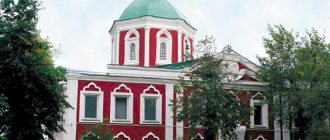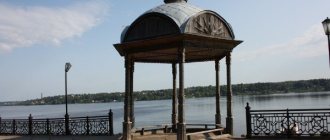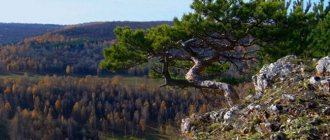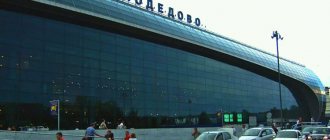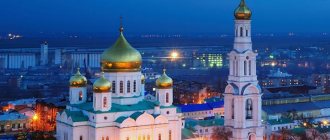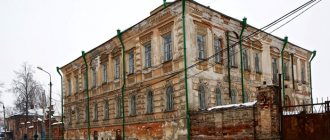Alekseevka is a city in the Belgorod region, located approximately 180 kilometers east of Belgorod, near the border with the Voronezh region. It is the administrative center of Alekseevsky district.
Alekseevka is a small cozy town of regional subordination, located on the Tikhaya Sosna River, on the southern edge of the Central Russian Upland. The village of Alekseevka was founded in 1685. It has city status since 1954. Recently, Alekseevka has been developing dynamically, but, nevertheless, it still maintains a quiet, patriarchal way of life, characteristic of small Russian cities. Combined with old houses, churches, and uncrowded green streets, this gives the town a special charm.
Local residents are not spoiled by the attention of tourists, but guests are always welcome here. The city, despite its small size, has seven hotels to suit every taste, including the new art hotel of the European level “Red Sunflower”. In Alekseevka, among the unsightly buildings of the Soviet period, you can find quite a few architectural monuments of local significance dating back to the 19th century. Among them are the Church of the Holy Trinity, built in 1808 and being the oldest stone building in the city, the Church of Dmitry the Wonderworker of Rostov built in 1813, the tavern of the merchant Kriklovinsky, the Kovalev house, the Church of Alexander Nevsky, the Lyubivykh merchant mansion, the Sanzherov house and others.
Aleseevka went down in history as the place where the first oil mill in Russia was built in 1833. In 1829, Alekseevsk serf Daniil Bokarev invented a method for producing sunflower oil. The city is also known for many of its natives - Heroes of the Soviet Union V.V. Sobin, N.A. Ruban and D.A. Usatov. The fates of the poet and philosopher N.V. Stankevich, academician A.V. Nikitenko, and Bolshoi Theater artist D.A. Usatov are connected with Alekseevka.
Alekseevka on the map of Russia
You can find Alekseevka on the map and get directions using your navigator using the coordinates (50.629961, 38.688095). In the north is Voronezh, in the northwest - Stary Oskol, in the northeast - Ostrogozhsk, in the west - Biryuch, Novy Oskol and Belgorod, in the east - Pavlovsk, in the southeast - Rossosh. In the south there is the border with Ukraine.
Temple of the Kazan Icon of the Mother of God (Ivashchenkovo)[edit]
During the restoration of the temple for the 150th anniversary, restorers discovered on the inner wall of the building under a layer of plaster the exact date of construction of the temple - 1802.
After 1917, with the establishment of Soviet power, the temple was used for other purposes. During the war, the temple worked, then it was closed again, used as a warehouse, a winnowing machine was installed, and grain was winnowed.
On July 21, 2005, on the patronal feast of the Kazan Icon of the Mother of God, a solemn service and consecration of the temple took place in the restored church, which was conducted by His Eminence Archbishop John of Belgorod and Stary Oskol.
Address:
309822, Belgorod region, Alekseevsky district, village. Ivashchenkovo.
Telephone:
+7(47234) 7-24-47
Climate
The moderate continental climate of Alekseevka provides warm summers and mild and snowy winters. This weather is considered the most favorable for living. The average January temperature is −7…−9 °C, the average July temperature is +18…+20 °C. A feature of the climate is the uneven distribution of precipitation over the seasons. The greatest amount of precipitation falls in summer - 30-40%, the least in winter - 15%. The first snow falls in October or November. The stable snow cover reaches an average of 18 cm.
Church of St. Basil the Great (Afanasyevka)[edit]
In 1775, a wooden Vasilyevskaya church with a bell tower was built in the village, which in 1886 had 33 acres of land and 1000 parishioners.
In 1905, the stone Vasilyevsky Church was built in the village. During Soviet times, the temple was closed, and at the beginning of the 21st century it was again handed over to believers.
In 2005, it was placed under protection as an architectural monument of the eclectic era.
Address:
309834, Belgorod region, Alekseevsky district, Afanasyevka, st. Maxim Gorky, 59.
Telephone:
+7(47234) 5-67-66
Email:
Official website of the temple
Attractions
The Alexander Nevsky Temple is located on the territory of the Central Cemetery of the city of Alekseevka. Its construction began in 1881 in memory of Emperor Alexander II, who died in a terrorist attack in St. Petersburg. In 1888, the temple was consecrated by Bishop Veniamin of Voronezh and Zadonsk. The date of the illumination of the temple coincided with the anniversary of the 900th anniversary of the adoption of Christianity in Rus'. Famous Moscow artists Malyshev and Kondratyev took part in the painting.
Temple of Alexander Nevsky
The Church of St. Demetrius of Rostov is a stone church built in 1813 and consecrated by Bishop Anthony in honor of St. Demetrius of Rostov. The building was built in the style of classicism. At the time of the construction of the temple, this part of present-day Alekseevka was a separate settlement of Dmitrievka. To this day, the townspeople still call it that.
Temple of Dmitry of Rostov
The Church of the Holy Trinity is the oldest building in Alekseevka, built in 1721. At first it was made of wood and consecrated in honor of St. Nicholas the Wonderworker. In 1808, the church was rebuilt from stone and named in honor of the Holy Trinity, but local residents, from old memory, called the temple and the square located next to the temple - Nikolskaya.
Temple of St. Thoritsa
The Alekseevsky Museum of Local Lore is located in the house of the Lyubiv brothers, who became famous as gilders of icons. The two-story building with rich decoration in neo-Russian style was built in 1895. The façade of the building has been preserved to this day in its original form. The museum was created in 1923. Its funds include almost 20 thousand exhibits. Of particular value are the collections of monuments of the tribes of the “Saltovo-Mayak” culture (VIII-X centuries). They were found during archaeological excavations at the site of the Alan settlement, near the western border of the city.
Alekseevsky Museum of Local Lore
A historical and architectural monument - a 19th century building on Gagarin Street. The two-story house in a classic style with a yellow facade was built in 1890 by Yakov Bokarev, the grandson of Daniila Bokarev, the founder of oil production in Russia.
House of Bokarevs
Content
- 1 Holy Trinity Cathedral (Alekseevka)
- 2 Church of the Intercession of the Blessed Virgin Mary (Garbuzovo)
- 3 Temple of Tikhon of Zadonsk (Kamyshevatoye)
- 4 Church of St. Basil the Great (Afanasyevka)
- 5 Temple of the Kazan Icon of the Mother of God (Ivashchenkovo)
- 6 Temple of Mitrofan of Voronezh (Khlevishte)
- 7 Church of the Great Martyr Varvara (Varvarovka)
- 8 Church of the Intercession of the Blessed Virgin Mary (Ilovka)
- 9 Church of the Epiphany (Podsredne)
- 10 Temple of Demetrius of Rostov (Alekseevka)
- 11 Temple of Alexander Nevsky (Alekseevka)
- 12 Church of the Transfiguration of the Lord (Matreno-Gezovo)
- 13 Church of the Nativity of the Blessed Virgin Mary (Koltunovka)
- 14 Church of St. George the Victorious (Repenka)
- 15 Church of the Ascension of the Lord (Shcherbakovo)
- 16 Church of the Annunciation of the Blessed Virgin Mary (Soviet)
- 17 Temple of the Archangel Michael (Glukhovka)
- 18 Church of the Assumption of the Blessed Virgin Mary (Lutsenkovo)
- 19 Church of the Nativity of the Blessed Virgin Mary (Zhukovo)
Church of the Epiphany (Podsredne)[edit]
In 1760, a wooden church with a bell tower was built in the village of Podserednee.
Since its foundation, the Epiphany Church has been restored several times.
The parish included the villages of Mukhovka and Liman. There were more than 500 parishioners.
The current wooden church was built in 1870.
In 2007-2015, repair and restoration work was carried out. The temple is an architectural monument.
Address:
309833, Belgorod region, Alekseevsky district, village. Podsrednee, st. Dikaneva, 52.
Telephone:
+7(47234) 5-55-27
Church of the Assumption of the Blessed Virgin Mary (Lutsenkovo)[edit]
According to the Decree of the Holy Synod of April 7, 1846 “On the construction of a wooden church in the Lutsenkovo farm with the formation of a separate parish,” a temple was built on the farm.
In 1928 the temple was closed.
In 1930, a tractor repair workshop was located in the temple building.
The newly built Assumption Church was consecrated on December 10, 2010 by Archbishop John of Belgorod and Stary Oskol.
Address:
309824 Belgorod region, Alekseevsky district, village. Lutsenkovo, st. Central, 9.
Temple of the Archangel Michael (Glukhovka)[edit]
The stone church in the village of Glukhovka was built before the revolution in 1917, but with the advent of Soviet power it was never consecrated. In the early 1930s, the building was dismantled into bricks.
The new temple is made in original Russian traditions from wood. Construction of the wooden temple began in 2008. The bells were made by the Voronezh Bell Foundry.
On January 14, 2012, Archbishop John of Belgorod and Stary Oskol consecrated the temple in honor of the Archangel Michael of God.
Address:
309831, Belgorod region, Alekseevsky district, village. Glukhovka, st. Shkolnaya, 56.
Temple of Mitrofan of Voronezh (Khlevishte)[edit]
The wooden church in the name of St. Mitrophan of Voronezh was built in 1858. The parish included the villages of Bereznyagi, Stanichny, and Popov.
During the Great Patriotic War, the temple was temporarily closed.
In 1989, the temple was renovated.
The restored Church of St. Mitrophan of Voronezh was consecrated by Archbishop John of Belgorod and Stary Oskol on May 25, 2008.
Address:
309840, Belgorod region, Alekseevsky district, village. Crib.
Telephone:
+7(47234) 5-61-96
Church of the Transfiguration of the Lord (Matreno-Gezovo)[edit]
The first church in Matryono-Gezovo was wooden, consecrated in 1800. Forty years later they built a stone one.
In 1861, a parochial school was opened.
During the years of persecution of the Church, the temple was partially dismantled, the bricks were used to build a village club and various outbuildings.
The newly built church was consecrated by Archbishop John of Belgorod and Stary Oskol on June 17, 2012.
Address:
309820, Belgorod region, Alekseevsky district, village. Matryono-Gezovo, st. Podgornaya, 12.
Telephone:
+7(47234) 7-37-00
Church of the Great Martyr Varvara (Varvarovka)[edit]
The first church in the village of Varvarovka was wooden. When it fell into disrepair, another one, also wooden, was built nearby, in the name of the Holy Great Martyr Barbara. In 1841, a third, but already stone church with three altars was built: in honor of the Kazan Icon of the Mother of God, in the name of the Holy Great Martyrs Barbara and Paraskeva Pyatnitsa.
During collectivization, Varvarovka became the center of the village council, which included the villages of Belozorov, Kovalev, Osadchiy, Chuprinin. Almost 6 thousand people lived on the territory of the village council, and about 2,700 people lived in the settlement itself. The church was closed and the bell tower was dismantled. In 1939, MTS was placed in the temple.
After the war, the building was dismantled into bricks, which were used to build a repair shop.
Construction of the new Church of the Great Martyr Barbara was completed in 2005. The consecration of the bell took place on December 29, 2004.
On August 21, 2005, the temple was consecrated and opened to believers.
Address:
309813, Belgorod region, Alekseevsky district, village. Varvarovka.
Church of St. George the Victorious (Repenka)[edit]
In 1852, a wooden church of the Holy Great Martyr George the Victorious was built in the village of Repenka.
In 1933, the temple in Repenka was closed and looted.
Since 1937, the temple building housed a warehouse, and since 1953 - a rural club.
In 1993, the St. George Church was handed over to the believers of the village of Repenka. At the beginning of the twentieth century, domes were installed on the temple.
Address:
309832, Belgorod region, Alekseevsky district, village. Repenka, st. Central, 62.
Telephone:
+7(47234) 5-45-28
Museum of Local Lore
The gallery, opened in the post-revolutionary period, is located in the former building of the estate of the local Lyubiv brothers. The exhibition occupies an area of 400 m² , and another 200 m² is .
The exhibition is dedicated to the history of the development of the settlement, as well as the various crafts that local residents were engaged in. It displays paintings by local artists, dishes and clothing, archaeological excavations, stuffed animals, historical documents and photographs.
Location: Nekrasova street - 44.
Church of the Annunciation of the Blessed Virgin Mary (Soviet)[edit]
The first church in the village of Sovetskoye (Sloboda Shelyakino or Petropavlovka) was wooden, built in 1778 in honor of the Annunciation of the Blessed Virgin Mary with the chapels of the holy apostles Peter and Paul.
In May 1935, the Annunciation Church was closed and the bell tower was destroyed. The surviving walls and solid foundation of the church served as the basis for the construction of the House of Culture, which functioned until the fall of 2010.
In October 2010, the administration of the Belgorod region decided to restore the Annunciation Church in the village of Sovetskoye, destroyed during the years of atheism, and on June 5, 2012, Archbishop John of Belgorod and Stary Oskol consecrated the restored temple.
Address:
309816, Belgorod region, Alekseevsky district, village. Sovetskoe, st. Mira, 1.
